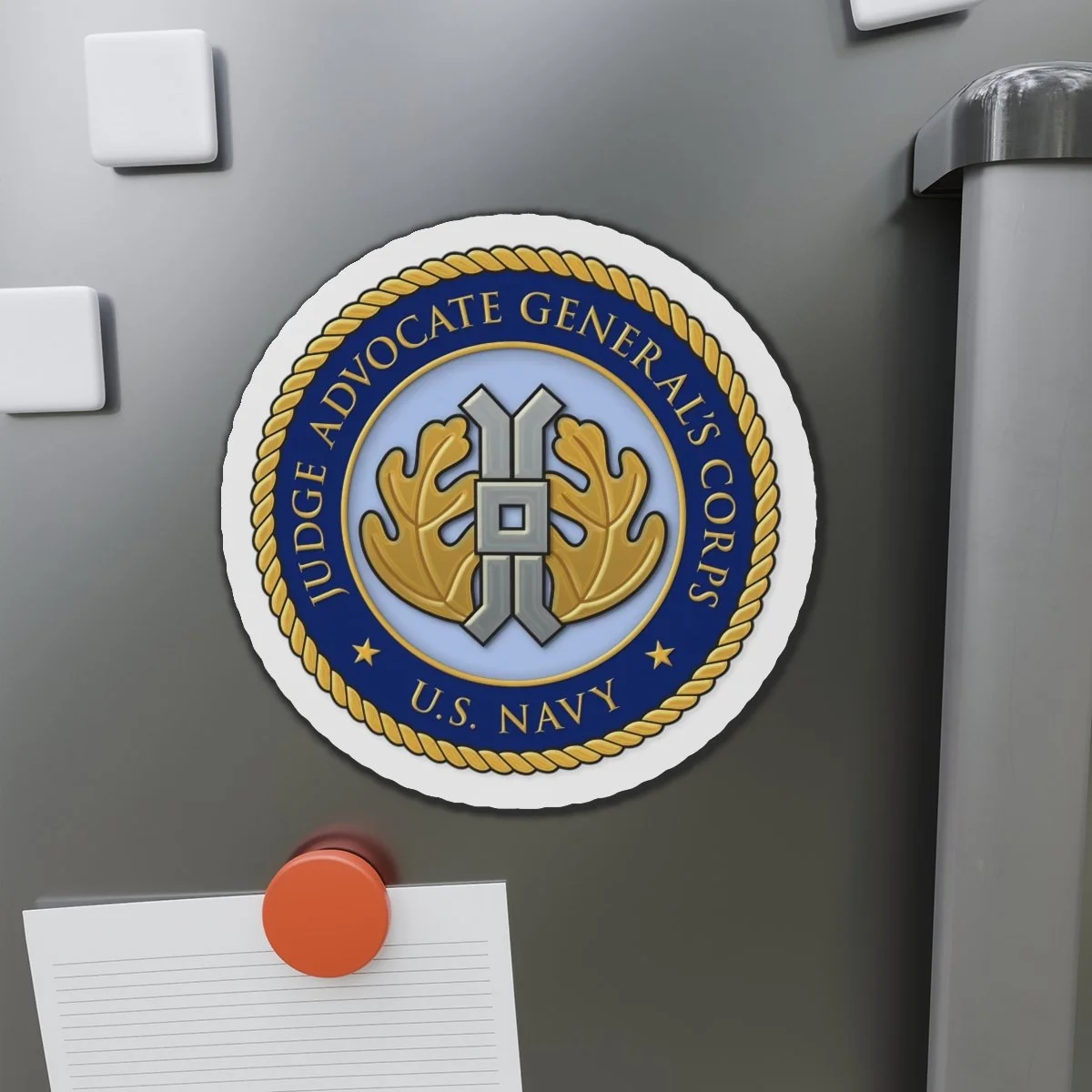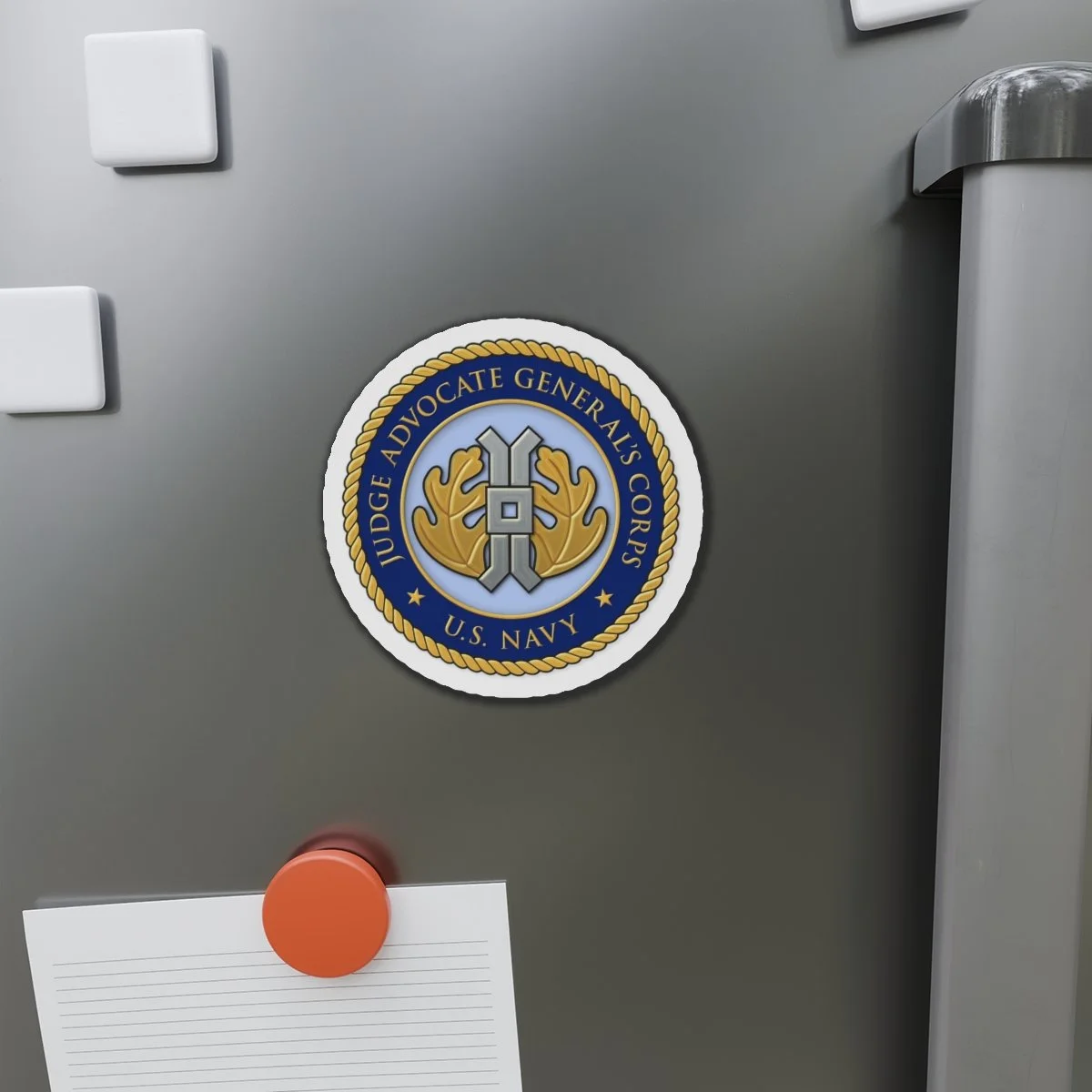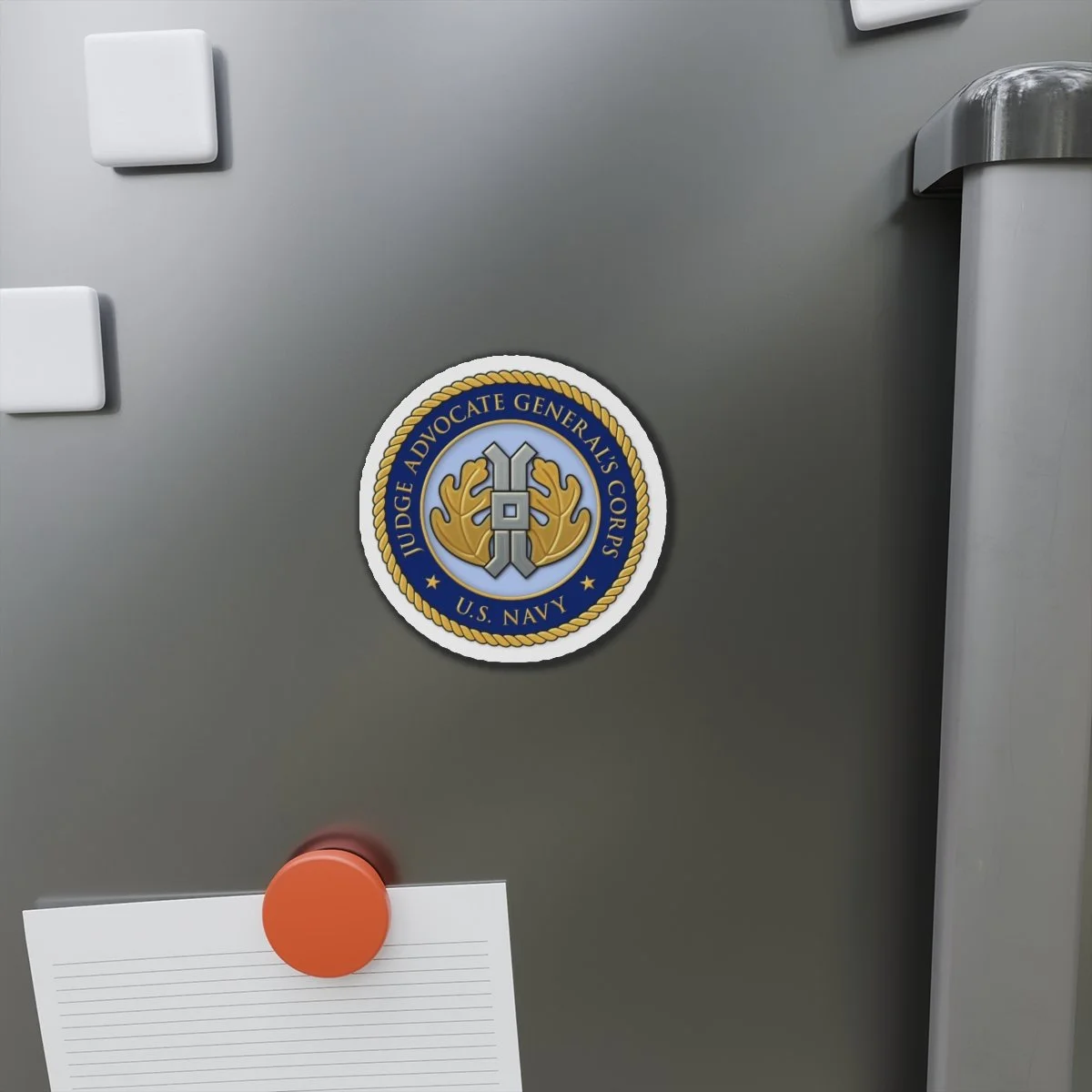 Image 1 of 5
Image 1 of 5

 Image 2 of 5
Image 2 of 5

 Image 3 of 5
Image 3 of 5

 Image 4 of 5
Image 4 of 5

 Image 5 of 5
Image 5 of 5






Navy Judge Advocate General (JAG) Corps Car / Trucks Vinyl Magnet (Great for Cars and Trucks)
from $6.50
Proudly show that you're a JAG Corps Officer with the Corps Logo die cut magnet . You can proudly put it on your car or truck and remove it when you have to wash it. Made with the die-cut technique, these magnets are flexible and highly durable. Choose between 5 different sizes and get the best fit for your decorating needs.
*Material: Vinyl
*Suitable for outdoor use
* Flexible and durable material
*Black backing
*Five sizes to choose from
History of the Navy JAG Corps
The legal arm of the U.S. Navy has evolved significantly since 1775, starting from the Articles of Conduct and developing into a sophisticated legal system requiring specialized legal professionals. The Civil War marked a turning point, with Secretary of the Navy Gideon Welles appointing the first House Counsel to the Navy. This role formalized over time, leading to the creation of the position of Solicitor and Naval Judge Advocate General in 1865, and later the permanent establishment of the Judge Advocate General (JAG) billet in 1880, with legislation to ensure the JAG was a qualified lawyer passed in 1950.
Significant milestones include the elevation of the JAG billet to Rear Admiral in 1918, the establishment of the Naval Justice School in 1946 for legal training, and the introduction of the law specialist program in 1947, which allowed line officers to perform legal duties. The creation of the Judge Advocate General's Corps in 1967 marked the formal acknowledgment of Navy lawyers as a distinct professional group. The Legalman rating, established in 1972, further professionalized the field by introducing trained personnel to support Navy legal operations.
The establishment of the Naval Legal Service in 1973 centralized legal services, which were later restructured into Region Legal Service Offices in 2005 and Defense Service Offices in 2012, highlighting the ongoing evolution and specialization of Navy legal services. Today, the JAG oversees a global network of legal professionals, providing comprehensive legal and policy advice across a wide range of areas, ensuring the Navy operates within the legal framework, and supporting the legal needs of Navy personnel.
Size:
Shape:
Quantity:
Proudly show that you're a JAG Corps Officer with the Corps Logo die cut magnet . You can proudly put it on your car or truck and remove it when you have to wash it. Made with the die-cut technique, these magnets are flexible and highly durable. Choose between 5 different sizes and get the best fit for your decorating needs.
*Material: Vinyl
*Suitable for outdoor use
* Flexible and durable material
*Black backing
*Five sizes to choose from
History of the Navy JAG Corps
The legal arm of the U.S. Navy has evolved significantly since 1775, starting from the Articles of Conduct and developing into a sophisticated legal system requiring specialized legal professionals. The Civil War marked a turning point, with Secretary of the Navy Gideon Welles appointing the first House Counsel to the Navy. This role formalized over time, leading to the creation of the position of Solicitor and Naval Judge Advocate General in 1865, and later the permanent establishment of the Judge Advocate General (JAG) billet in 1880, with legislation to ensure the JAG was a qualified lawyer passed in 1950.
Significant milestones include the elevation of the JAG billet to Rear Admiral in 1918, the establishment of the Naval Justice School in 1946 for legal training, and the introduction of the law specialist program in 1947, which allowed line officers to perform legal duties. The creation of the Judge Advocate General's Corps in 1967 marked the formal acknowledgment of Navy lawyers as a distinct professional group. The Legalman rating, established in 1972, further professionalized the field by introducing trained personnel to support Navy legal operations.
The establishment of the Naval Legal Service in 1973 centralized legal services, which were later restructured into Region Legal Service Offices in 2005 and Defense Service Offices in 2012, highlighting the ongoing evolution and specialization of Navy legal services. Today, the JAG oversees a global network of legal professionals, providing comprehensive legal and policy advice across a wide range of areas, ensuring the Navy operates within the legal framework, and supporting the legal needs of Navy personnel.
